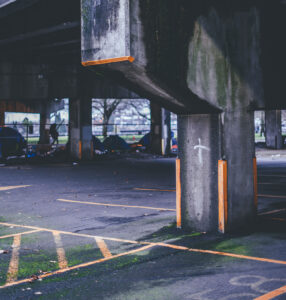In construction projects, “piling” involves drilling deep foundations into dense, hard soil, then installing piles or pile foundations to give structural integrity and strength to buildings above. Think of piles as load-bearing columns that keep structures steady when topsoil or higher soil isn’t strong enough to do the job by itself.
There are four different primary types of piles or pile column materials. Let’s take a look at each of these and their differences.
Timber Piles
Timber piles were used more frequently in previous decades, but they are now much scarcer because of a lack of easily accessible timber wood. Timber piles are easy to handle and inexpensive if timber is plentiful, and sections can easily be joined together. Individual columns can be shortened if necessary.
However, timber piles frequently rot above groundwater levels and have a much more limited load-bearing capacity. They can also be damaged in transit and aren’t ideal for saltwater construction projects.
 Concrete Piles
Concrete Piles
Concrete piles are technically divided into two subtypes: precast and cast-in-place concrete piles.
Precast concrete piles are comprised of high-quality, reinforced concrete made somewhere other than the final deployment site. These are highly stable and relatively inexpensive, and they can be driven into the ground in long lengths. But they can also be damaged in transit, and they may displace or disturb soil during the pile-driving process.
Cast-in-place concrete piles are very commonly used for foundations since the concrete material can be inspected before casting, and they are relatively inexpensive. Their lengths can also be quickly adjusted if needed. However, they can’t be used immediately after installation, and the potential for damage or the surrounding soil is also a problem.
Sand Piles
Sand piles involve making a column-shaped hole in the ground and filling it with sand. Sand piles are extremely economical for road embankments and small houses and are very easy to construct. Construction teams can also opt to use gravel instead of sand, and there’s no effect from groundwater or underground burning.
But sand piles aren’t ideal if the surrounding soil is already soft. Furthermore, they’re bad choices for construction projects in regions that are prone to earthquakes.
Steel Piles
Steel piles are always made of high-quality, super-strong steel. They can be cut or joined via welding if their shapes or lengths need to be changed. As a result, they are very easy to handle and can be driven through very dense layers of soil. Since steel is naturally strong, steel piles can also carry heavy loads.
That said, steel piles will eventually corrode and are relatively expensive compared to other types of piles.
As you can see, there are many different types of piles a construction crew might use for a given project. With the right pump, you can clear the way for your chosen pile material or even install concrete or sand piles quickly and easily. Check out QuikSpray’s pumps today!


